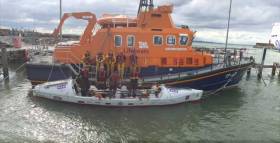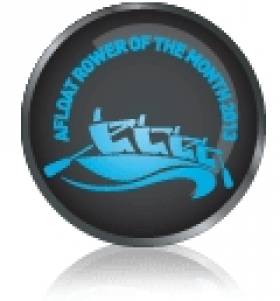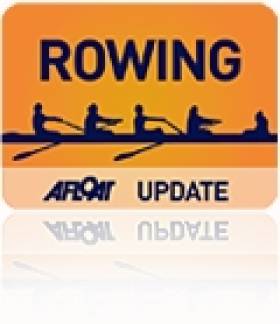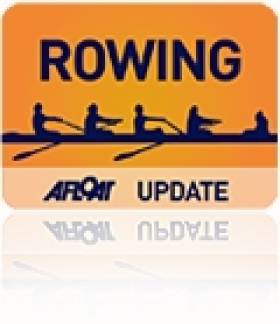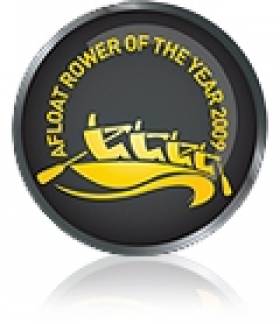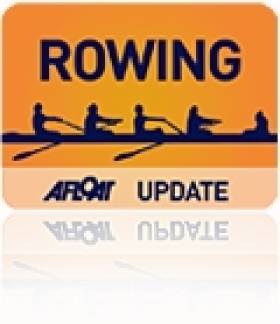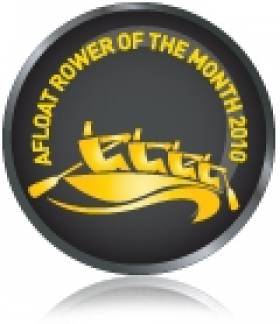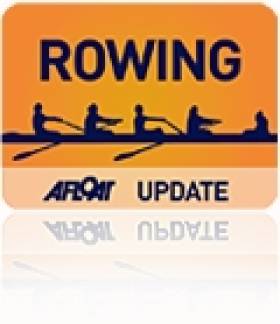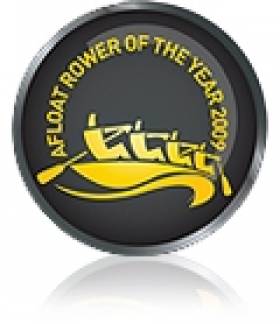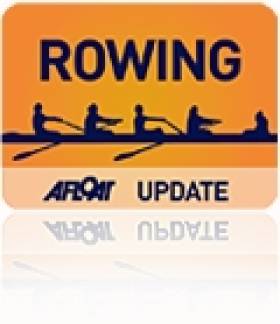Displaying items by tag: Rower
Rosslare Harbour RNLI Launch to Four Rowers in Difficulty off Wexford Coast During Record-Breaking Attempt
Rosslare Harbour RNLI launched last night to four young men attempting a record-breaking row off the UK coast after they requested assistance in worsening weather conditions. They were brought to safety by Rosslare Harbour RNLI in a call out that lasted over six hours as the all-weather lifeboat towed the 24-foot rowing boat out of the channel and back to the safety of Rosslare harbour.
The four young rowers have had to set aside their record attempt after setting off from Tower in London 10 days ago to row around the UK coast. After leaving London they came up through Bristol channel and out into the open sea. However the weather was worsening last night and they found themselves battling the elements 22 miles off the Irish coast. Conditions were fresh with a north north-westerly wind gusting 25 knots. It was then hey made the decision to contact the Coast Guard and request help.
Volunteer lifeboat crew at Rosslare Harbour RNLI received the call at 6.15pm and launched in minutes. When on scene an hour later they checked if the young men were okay before establishing a tow and bringing the craft back slowly so as not to part the tow to the safety of Rosslare Harbour. The tow took six hours. The four rowers are currently being looked after in Rosslare before they decide on their next move.
Commenting on the call out Rosslare RNLI Lifeboat Operations Manager David Maloney said: ‘This call out was a good example of people recognising the importance of calling for help early when they realise they may be getting into difficulty. The group were dealing with worsening weather conditions and a changing tide which was taking them further from where they needed to be, all while they were mid-channel on a record attempt.’
However they didn’t let this sway them and raised the alarm bringing help. They had the right safety equipment and made a call quickly. If they had waited until things got worse and help was not close enough, it could have ended very differently. I have no doubt they will achieve any records they set their mind to in future.’
#ROWING: The Afloat Rowers of the Month for April are the Galway Rowing Club under-23 women’s eight which won the Division One title at the Queen’s University Regatta, the first eFlow Grand League Regatta of the season. All eight rowers are juniors, with only talented cox Aifric O’Regan falling outside this age group.
Rower of the Month awards: The judging panel is made up of Liam Gorman, rowing correspondent of The Irish Times and David O'Brien, Editor of Afloat magazine. Monthly awards for achievements during the year will appear on afloat.ie and the overall national award will be presented to the person or crew who, in the judges' opinion, achieved the most notable results in, or made the most significant contribution to rowing during 2013. Keep a monthly eye on progress and watch our 2013 champions list grow.
Ireland Olympian Puspure is Afloat Rower of the Year
# ROWING: Sanita Puspure is the Afloat Rower of the Year for 2012. Puspure made the A Final as a single sculler at World Cup Regattas in Belgrade and Munich and did wonderfully well to qualify as the sole Ireland rowing representative at the Olympic Games. In the Olympic Qualification Regatta at Lucerne she claimed the fourth and final place, pushing Iva Obradovic of Serbia, one of the favourites, into fifth. The three women who finished ahead of Puspure cut a dash at London 2012: Denmark’s Fie Udby Erichsen took silver; Kim Crow of Australia took bronze (in addition to a silver in the double sculls); America’s Genevra Stone won the B Final. Puspure’s position was destined to be in the 11 to 13 ranking and she was unlucky first to suffer illness in the run up to the Games and then to be drawn in a difficult quarter-final which saw her lose out narrowly on a place in the A/B Semi-Finals, the top 12. She won the C Final convincingly to place 13th. After the race she spoke of looking forward to climbing the rankings in this discipline and of targeting Rio 2016. Her steeliness in key races and her very good form in the recent National Assessment suggests that the 30-year-old could be a rower to watch in this Olympiad.
Rower of the Year: The judging panel is made up of Liam Gorman, rowing correspondent of The Irish Times and David O'Brien, Editor of Afloat magazine.
Kelly And Sara G Crew Rescued After Capsize
#ROWING – The crew of the Sara G, including Irishman Aodhan Kelly, have been picked up at sea after a capsize. The shore-based team said the six-man crew were safe and well on board the cargo ship Nord Taipei. The crew had been attempting to break the world record for rowing the Atlantic Ocean.
Holly Nixon is Afloat Rower of the Year 2011
#ROWING – Holly Nixon is the Afloat Rower of the Year for 2011. The Enniskillen woman won the Afloat Rower of the Month award for August after making history by becoming the first Ireland rower to medal at the World Junior Championships. Nixon took silver in the single sculls behind Anne Beenken of Germany at Dorney Lake, the site of next year’s Olympic Games regatta. In June she had joined up with Sanita Puspure, Lisa Dilleen and Eimear Moran to win the elite quadruple sculls at Henley Women’s Regatta.
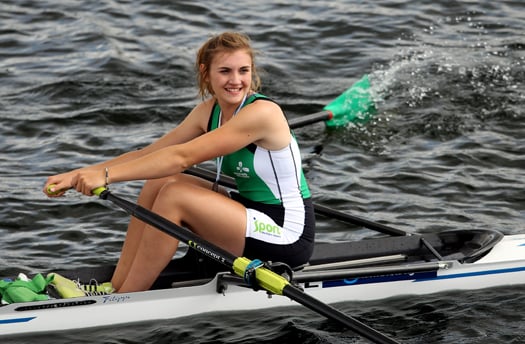
Ireland's Holly Nixon pictured after winning Silver in the Women's Single Sculls at the 2011 World Rowing Junior Championships at Dorney Lake in August. Photo: Scott Heavey/Getty Images
The Devenish College student and Portora rower is now concentrating on her A Levels, but her performances at the recent National Assessment and approaches from American universities with scholarship offers suggests that she has a bright future as a rower.
Rower of the Year: The judging panel is made up of Liam Gorman, rowing correspondent of The Irish Times, President of Rowing Ireland Anthony Dooley and David O'Brien, Editor of Afloat magazine. Monthly awards for achievements during the year appear on afloat.ie. Keep an eye for the Rower of the Month awards in 2012.
Neptune Rower Aodhan Kelly Hopes to Rule The Atlantic
Kelly is now based in Reading, but he cut his rowing teeth with Neptune Rowing Club in Dublin, and won eight national rowing titles. He was also selected on Ireland teams. Neptune are staging a race-night fundraiser for him in the club on November 12th.
Portora/Ireland Quadruple are Rowers of Month
The Rowing Ireland/Portora composite which won the elite quadruple sculls at Henley Women’s Regatta are the Afloat Rowers of the Month for June. The crew of Eimear Moran, Lisa Dilleen, Holly Nixon and Sanita Puspure beat a British combination crew in the final by four lengths. Dilleen and Puspure had earlier won the elite double sculls.
Rower of the Month awards: The judging panel is made up of Liam Gorman, rowing correspondent of The Irish Times, President of Rowing Ireland Anthony Dooley and David O'Brien, Editor of Afloat magazine. Monthly awards for achievements during the year will appear on afloat.ie and the overall national award will be presented to the person or crew who, in the judges' opinion, achieved the most notable results in, or made the most significant contribution to rowing during 2011. Keep a monthly eye on progress and watch our 2011 champions list grow.
O'Brien's Bridge is Venue for First Head of River Race
Over one thousand rowers from clubs across the country, including crews from Northern Ireland, will gather at O'Brien's Bridge in Co. Clare for Rowing Ireland's first National Head of the River race of 2011 this weekend.
St Michael's Rowing Club, Limerick is hosting this weekend's competition, which is the first event of the 2011 rowing season, and is a national two blade event, that is, single sculls and coxless pairs.
The Head chairman Robert LeGear, said today, "We're delighted with the massive entry so early in the season. It's a sure sign of the interest and growth in club rowing. All we need now is fair weather for the event."
He added, "One hundred and twenty two boats will compete in the morning's Men's pairs and Women's single sculls, which get underway at 11.00 am. In the afternoon, one hundred and sixty six boats will compete in the Men's singles and Women's pairs which start at 2.00 pm.
The O'Brien's Bridge course is a favorite with rowers because of the calm stretch of water it offers. St Michaels have been running their own head of the river race here for over twenty eight years.
National Head of the River races are time trials with senior boats going off first and then working down through all the grades to under-fifteens. The race caters for men and women in singles and pairs at all levels, under 15, 16, 18, Novice, Intermediate and Senior.
Other boat categories will be on offer throughout the day in a rolling head time trial competition which gets underway at 9 am and runs until 4 pm.
The main National Head races take place at 11.00 am and 2 pm.
Click this link for Irish Rowing detailsClick this link for the Latest Rowing News
Quadruple Scull Named Rowers of the Year
It was a good year for Irish rowing: among the highlights were an Ireland eight taking bronze at the World University Championships; John Keohane winning the single sculls title at the World Coastal Rowing Championships; Siohan McCrohan and Claire Lambe reaching A Finals at World Cup and European Championship level. At home, NUIG won the senior eights title after another great battle with Queen's. Standing out above the rest, however, is the achievements of the four men who made up the Lightweight Quadruple Scull which took silver at the World Under-23 Championships. Niall Kenny, Michael Maher, Mark O'Donovan and Justin Ryan (pictured below) are the Afloat Rowers of the Year 2010.
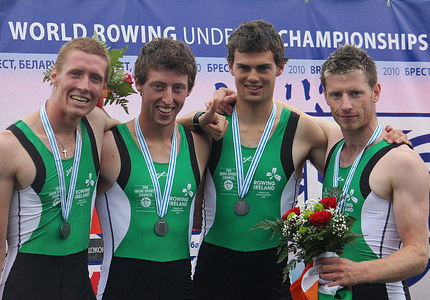
Rower of the Year award: The judging panel is made up of Liam Gorman, rowing correspondent of The Irish Times, President of Rowing Ireland Anthony Dooley and David O'Brien, Editor of Afloat magazine. Monthly awards for achievements during the year have appeared on afloat.ie. The overall national award goes to the person or crew who, in the judges' opinion, achieved the most notable results in, or made the most significant contribution to rowing during 2010. Thanks for your interest!
Solo Rower says Atlantic Crossing was 'horrific'
The first Irish man to row solo across the Atlantic Ocean has spoken of his fears that some one will be killed on the challenge which he says was "horrific". After spending 118 days at sea Limerick man Seán McGowan was honoured with a mayoral reception in his native city last night Kathryn Hayes has the full story on the Woodvale Ocean Rowing Race in the Irish Times. Click read more for the story link.
Sean McGowan reached land in Antigua May 1 to become the first Irish-based oarsman to row across an ocean. The 42-year-old from Shannon Rowing Club crossed the Atlantic in 118 days one hour and 14 minutes. He had rowed out of La Gomera in the Canary Islands on January 4th.
Solo rower warns against 'horrific' Atlantic challenge
Click this link for Irish Rowing detailsClick this link for the Latest Rowing News



























